[dcs_img_center desc=”Photo: Despite two recalls in 2012, Caracal pistols remain in high demand.”
framed=”no” w=”600″ h=”270″]
http://gunsandtactics.wpengine.com/wp-content/uploads/2013/04/caracal-600-270.jpg
[/dcs_img_center]
[dcs_post_top]
[dcs_fancy_header color=”#000000″ fweight=”bold”]A closer look at recalls in the firearms industry with expert, Wes Doss[/dcs_fancy_header]
[dcs_thinspliter size=”medium”]
Recall! The single word that strikes fear and acrimonious bitterness in the hearts and minds of consumers, while throwing manufactures into full blinding panic. While this term has become a standard in today’s society, thrown about with the ferocity of a group of teens egging a house on Halloween, the use of recalls to mend shortcomings with faulty products is really less than 100 years old and was brought about because of serious atrocities that occurred in all levels of industry at the time of inception. Take a break from your high speed internet surfing and venture to your local public library and look for a book titled “The Jungle” by Upton Sinclair to get a feel for what life was like not so long ago and when industry existed with little or no accountability. In this book, published in 1906, Sinclair graphically exposes the horrid unsanitary squalid conditions of the U.S. meat packing industry. Considering when the book was written it paints a graphic image that rivals the gore and goo of any modern psycho chainsaw killer movie, easily enough to convince many to become vegetarian.
Product quality and safety are the biggest branding tools available to a manufacture bar none! The power of word of mouth advertising and customer satisfaction is by far more powerful than any other form of marketing, but Internal manufacturing errors, design faults, and malicious tampering mean that instead of emphasizing the strength of the company’s products to customers, the exact opposite occurs, or at least it could. The consequences to a manufacturer for a faulty product can be severe, and to a consumer they can mean both financial loss and physical injury. Despite a company’s best efforts to design, manufacture and sell safe and reliable products, the possibility still exists that dangerously defective products may reach consumers. Now, in years past when a product defect was detected, a manufacturer had to launch an exhaustive campaign to notify consumers and then an equally exhaustive effort to get the defective product back in order to repair or replace it. Today with the immediacy of information and wide spread method of communication afforded by the internet, the task, while still intensive, is simpler, faster and more thorough, but the same benefits also alter the risk landscape greatly.
The immediacy and anonymity of social media often causes a dangerous flip side when things go wrong, the self-anointed authorities of the World Wide Web, who command hordes of sycophantic minions who follow these supercilious prevaricators like lemmings leaping with blind faith to their death, are often at the helm of much of the unrestrained panic created about a faulty product or even the shear rumor of a faulty product, launching spectacular crusades against the manufacturer often before the manufacture has had an opportunity to research the problem and take any corrective action, sometimes even before the manufacture has even been made aware of the problem itself. However, when a well-managed recall is put forth by a responsible manufacture the effects can be the opposite and although the manufacture has significant costs involved in managing the incident, the benefits of handling it correctly means that the manufacturer is pushing forward in a strong way and quickly restoring the standing of the business and recapturing consumer confidence. For example, in 1978 Wham-O Manufacturing Company, the folks behind the Frisbee and the Hula-hoop, in cooperation with the Consumer Safety Product Commission, launched a voluntary recall of the popular “water wiggle” toy, this after $2.5 million units had been sold in the U.S. over a 17 year period. The recall came about after the death of a 3 year old child in 1975 and a 4 year old child in 1978 who both drowned after the toy got lodged in their mouths. Wham-O launched a massive recall and stopped production of the toy after only two incidents, even after it was found that the parents of both children had modified the toys and left them partially disassembled so they could use the toys internal high pressure nozzle for other uses. Long story short, Wham-O still exists as a major manufacture of 20+ different product lines confidently sold across the globe.
What is a product recall?
A product, regardless of industry, can be recalled when it has a safety defect or fails to meet government standards, assuming that government standards exists. This is where firearms typically stray from the rest of the world, as currently there exists no government regulatory organization with exclusive oversight over firearms manufactures, not BATF not even the Consumer Product Safety Commission, putting the ethical weight of responsibility in the hands of the manufacturer concerned. And, the firearms industry has definitely not been without its product issues, many resulting in recalls, and many more that have not, at least not officially. Consider the thousands of customer complaints and more than 75 lawsuits alleging the Remington 700’s penchant of firing without the trigger being pulled resulting in at least two dozen deaths and more than 100 serious injuries. Consider also, with over 500 million guns in the product line produced since World War II, Ruger’s old model single action revolver being tied to 600+ deaths attributed to unintentional discharges, which occurred from the gun being bumped (1953 to 1972). Or the 1986, $1.2 million dollar lawsuit against Colt following an unintentional discharge from one of their single action revolvers, leaving the recipient of the round with severe nerve damage and rendering him impotent. Not a single recall occurred as a result of these incidents. At this point it’s important to state that I’m not bashing the firearms industry in any way, shape or form. I’ve built a strong career and reputation in this industry for years following both military and law enforcement service and I’m proud of it. My point is simple… in reality, as close to perfection as we get, man made things will sometimes fail and/or potentially break. The important factor of the equation is the responsible actions of both the manufacture and the consumer.
[dcs_column float=”right” mright=”0″ mleft=”22px;” width=”250″ bgcolor=”#eeeeee;” padding=”12px 12px 0px 12px;” rounded=”3″ border=”false” bcolor=”#000000;”]
[dcs_img_center
framed=”no” w=”250″ h=”167″]
http://gunsandtactics.wpengine.com/wp-content/uploads/2013/04/wes.jpg
[/dcs_img_center]
About Wes Doss, PhD.
Wes is an internationally recognized firearms, tactics, and use of force instructor with over 30 years of military and civilian criminal justice experience, as well as significant operational time with both military and law enforcement tactical and protective service organizations. Wes holds specialized instructor certifications from the U.S. Army, the U.S. Marine Corps, Arizona POST, the Smith & Wesson Academy, the Sigarms Academy, the NRA LEAD, and FEMA.
Wes has studied adult education and human performance extensively and has a broad background in the martial arts, with over 25 years of training, teaching, and competitive full contact fighting experience. Wes is the founder, President, and General Operating Manager of Khyber Interactive Associates, LLC and the Annual 1 Inch to 100 Yards Warrior Conference. Wes holds a Masters degree in Criminal Justice Administration and a PhD in Psychology. Wes is a member of a number of professional associations, including: The International Association of Law Enforcement Firearms Instructors (IALEFI), The American Society of Law Enforcement Training (ASLET), The National Rifle Association (NRA), The National Tactical Officers Association (NTOA), The Military Police Regimental Association (MPRA), and the International Association of Counter Terrorism and Security Professionals (IACTSP).
Wes is also a published author, with numerous articles in various publications, such as; SWAT magazine, ASLET “The Trainer”, and The NTOA “Tactical Edge”. Wes is also the author of the bestselling books “Train to Win”, and “Condition to Win” both training psychology/philosophy books focused on law enforcement and military trainers and professionals. Wes’s third book “Inside the Gap” is a psychological exploration of the close quarters environment and methods to train for them, its due for release in winter of 2013.
[/dcs_column]
As I mentioned earlier, the practice of product recalls originated in the mid-1900’s when congress created various consumer laws that mandated manufacturer accountability after years of accidents and deaths from malfunctioning and unsafe merchandise. And, while various federal agencies have the oversight to request recalls, manufactures can voluntarily implement a recall if they discover a defect in one of their products. In a typical product recall, the manufacture contacts the government agency with jurisdiction over there product type then the manufacture and the government launch a mutual effort to notify customers of the recall. In other situations, the government agency may receive information about a defective product and then request that the manufacture initiate a recall. In most circumstances, the manufacture complies. However, only in the case of infant formulas, can the government actually issue a mandatory recall without a court order, but even with a court order the key in a recall is the manufacture and without a manufactures responsible behavior and willingness to take corrective action there really is no chance of an effective recall.
The effective recall in action
In regards to responsible behavior on a manufactures part, let’s consider a couple of very recent situations in the firearms industry from a single manufacture. Caracal is a relatively new small arms manufacturing firm that launched production in Abu Dhabi in 2007. In a short time Caracal started working closely with the UAE Armed Forces and the forces of several western nations to develop a range of modern pistols for combative and competitive applications, and have seen tremendous growth in the United States, the Middle East, Europe and South Africa. In September of 2012 Caracal was made aware of two individual situations pertaining to their F and C pistols. The first report involved a Caracal C pistol with a chambered round discharging when the pistol was dropped on a hard surface, resulting in no injuries. The second report detailed a failure in which the Caracal C’s slide broke in half while the pistol was being fired, resulting in minor injuries to the shooter. While there is no good explanation for either situation, Caracal did something that surprised many and went straight up in the face of those self-proclaimed internet backbiting scandalmongers. First, they made no excuses offering not a single dramatic or fluffy marketing campaign to try an excuse a short coming, no outpouring of celebrity spokesmen, nothing. Next, with safety as a primary concern, Caracal launched an extensive and voluntary full product recall of its Caracal F and C pistols, followed by a limited recall of its Caracal C pistols. This recall also involved a few things seldom seen on the part of a manufacture; Caracal offered a 100% cash refund to anyone who did not want to exchange their pistol for a new and improved one. And to those who remained loyal to Caracal, a loyalty package was developed to provide each affected customer with a new pistol, extra magazine, t-shirt or hat and a 15% rebate on any new Caracal purchase. However, sometimes these processes move slow and time became an opponent as many of the reports that were circulating suggested that Caracal was taking too long to act, casting them suspect due to two product recalls, both occurring in the same quarter of 2012.
The fact is that while the world is populated by honest people, there also exists a proportionate number of dishonest people, too and any issue with a product must be investigated before official corrective actions can occur. The time it takes to do a thorough investigation on a product that is sold worldwide through several distribution channels is time consuming and requires mature patience on the part of all parties concerned. The investigation and analysis of the situations brings a lot of factors into the equation, among them are the validity of the information or how truthful the claims are, the seriousness of the hazard or severity of the consequences and the number of products involved; and the big one from an accountability standpoint is the actual nature of the defect; is it in the design? The manufacturing or packaging? Could the issue stem from raw materials? Or, could it even be a case of malicious product tampering or unauthorized replication?
Does anyone remember the 1992 Disney World rape scam, the 2005 finger in the chili incident at Wendy’s or the 2008 $2.2 million vehicle recall launched by Toyota over claims of unintentional acceleration? If Disney, Wendy’s or Toyota had immediately admitted fault in those cases without conducting proper investigations, bringing forth accurate and factual information, and had they not worked diligently on consumer satisfaction to maintain their existing customer base, it’s likely you might not have a set of cherished Mickey Mouse ears or be able to enjoy a bowl of Wendy’s chilli while sitting in your Toyota Prius.
The number of product recalls increases steadily every year for a number of reasons to include a more demanding consumer base, higher standards of safety and higher testing capabilities, which allow a manufacture to detect and identify defects. Then there is the near instantaneous communication era we live in and the competitive nature of trying to rush products to market ahead of the competition. The number of recalls and the types of companies involved demonstrates that no company can completely eradicate the possibility of a product related issue, but through responsible and accountable actions they can mitigate them. When both the manufacture and the consumer work together a recall can be a manageable challenge, rather than a devastating crisis.
[dcs_post_bottom]
[dcs_related_posts]





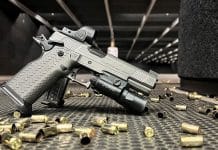


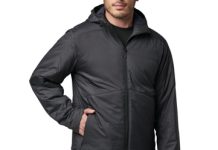

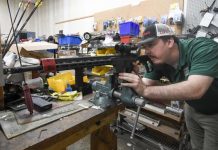
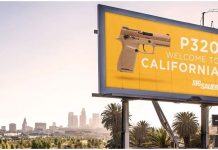
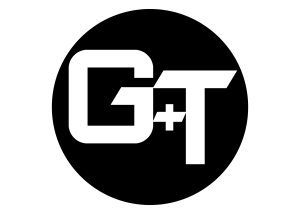
FWIW: for the sake of accuracy it was a Caracal C that discharged after being dropped onto a concrete floor. How do I know? I am the owner of the weapon who was grazed by the round
[…] my good friend, co-worker and brother-from-another-mother, Wes Doss wrote an article (http://gunsandtactics.wpengine.com/recalls-in-the-firearms-industry#comments) that had an anonymous commenter making a harsh accusation. This person had the audacity to be […]
As something to consider, here is an updated list of Firearms Recalls in the industry: http://gunguy.tempdomainname.com/recalls.htm
Note: “Glock: several pistols…” I’m not making any negative comment about Glock, they produce excellent firearms, but it’s important to observe these events objectively.
Thank you for the thorough and succinct article. It was particularly helpful that you shared samples of the extensive incidents of accidents and recalls that other manufacturers have experienced and survived. I think that anyone with a bit of sense that operates in the business world – particularly in manufacturing and development – can look at the Caracal recalls (that our anonymous friend here seems so particularly interested in and critical of) and understand that this is an unfortunate yet common occurrence that has actually been handled quite well overall.
Unfortunately, there’s little that can be done by any company to appease the often times legitimate emotional reaction that customers experience when something they paid for falls short of their expectations. As a gear and gadget guy, I research and purchase high-quality products that I have determined will serve their value and when something breaks or there is a problem, I am comforted only be the fact that I almost always have guarantees and warranties that cover the product. With that said, I still expect the potential for these high-end products to fail at times, and when they fail, it takes a long time and can be a bit of a hassle to get things repaired or replaced. The most important factor however, is that the company is responsible and lives up to their commitment.
The bigger issue in this article, as Wes points out, is that there are those out there that are eager to seize an opportunity to jump on the bandwagon to take down a product (or even a philosophy or technique) with little regard to the validity of the claims. These individuals are often motivated more by inflated ego or miss-placed bitterness, and occasionally by more sinister motives.
This in no way negates the negative experiences that individuals have, but it’s important for folks to take a breath and not jump to conclusions. I appreciate the gentlemen above that were 1) honorable enough to engage in open conversation even if their experience was negative (instead of hiding behind obviously false names) and 2) shared their personal experience in a respectable and calm way.
Even more than by politicians or special interests, our industry and lifestyle is threatened by those who spew uncontrolled anger, hate and subversiveness across the internet. We have to set a new example of relating and responsibility, and I think that a manufacturer taking the initiative in ensuring user safety and product reliability is a good demonstration of how that can be done.
Wes,
Well done article. I had totally forgotten about the Water-Wiggle.
“J Smith”; I find it interesting that Wes showed examples of Ruger, Wham-O, Colt and Remington, all of which had/have products that caused deaths or severe wounds to users, and then described how each company dealt with those issues. But you, in your anonymity, choose to harp on the use of Caracal’s current and eagerly watched recall as an example. I know for a fact that Wes does not own, use or have possession of any Caracal handgun, nor does he receive any gain of any kind from them.
I see nowhere in the article where Wes applauded the design, capabilities or uniqueness of the pistols, nor did he imply that we should purchase Caracals. Which is the same treatise he used for the other brands used as examples.
I am sure Wes will pop up here shortly and confirm my statement, but he shouldn’t have to. ” J Smith” I ask that you should choose your “battles” wisely. There are plenty of self-proclaimed “Instructors” and Self-Defense “Experts” traveling the country and waxing eloquently about their dogmatic training styles that are/were talking up the Caracal pistols like they are the best thing since sliced bread. Why? Because they are supported or hoping to gain support from Caracal.
These same folks are the ones that pick or choose to demonize one weapon platform or another just to have something to say on social media and write books about techniques and tactics that they have NO experience in. Wes is not one of these men.
Please use your anonymity to go bug them, they are the snake-oil salesmen you are looking for.
The article regarding product recalls is purely a representation of my own research, as well as my own experiences over the last two decades in this industry and was written for Guns & Tactics Magazine.
Far more than a defense of Caracal and any of its partner companies, it is more an outlet for my own disdain for those that hide in the anonymity created by the internet, those that sit behind computer screens and create turmoil that serves no other purpose but to cause anger and prolonged rumors, seeking to destroy someone or something for no other reason than to simply see it burn, then dance joyously around the flames beating their chest like they accomplished something great.
In two decades I have seen several product recalls in this industry, some good and some bad, and the key element that exists in all of them is the consumer who is never happy at the speed at which their part of the recall is handled and in all reality nothing in life happens as fast as we want it to.
I was impressed at the initial efforts of Caracal to rectify the situation, to what degree they are effective still remains to be seen, in as much as this recall is only a few months underway, but the undeniable fact is that they did move into action faster than most of this industry has under similar circumstances and have made attempts to fix the problem.
As previously stated the article is a representation of my own research and experience in the industry and was written for Guns & Tactics Magazine, period.
I’ve received no compensation from Tawazun or Caracal, nor will I.
In fact, I do not even own a Caracal pistol.
Wes Doss – well done on making no attempt at subtletely and being quite blatant in this PR effort for Caracal.
Can Mr Doss please confirm that he has not derived any direct or indirect benefit (in cash or in kind) from Tawazun Holdings/Caracal or any person or entity linked with or employed/engaged directly or indirectly by Tawazun/Caracal.
I bought a Caracal in October and learned about the recall a few days later. So now I’ve had the gun 6 months and have not been able to shoot it. I still don’t know when Caracal will make the gun right.
[…] Read More: http://gunsandtactics.wpengine.com/recalls-in-the-firearms-industry […]
I bought a Caracal F last Fall. Great gun. Then the recall was announced in November 2012. As of April 2013, my gun has yet to be replaced. Ive called, emailed, Facebooked etc. No replacement. No customer service. IMO.
When was the last time that you contacted them? I saw a Facebook post recently that they were actively processing the exchanges and provided contact information for customers with affected products.
Great article Wes. I believe you have hit the nail on the head!
Brian, Thanks for the kind words!
Comments are closed.